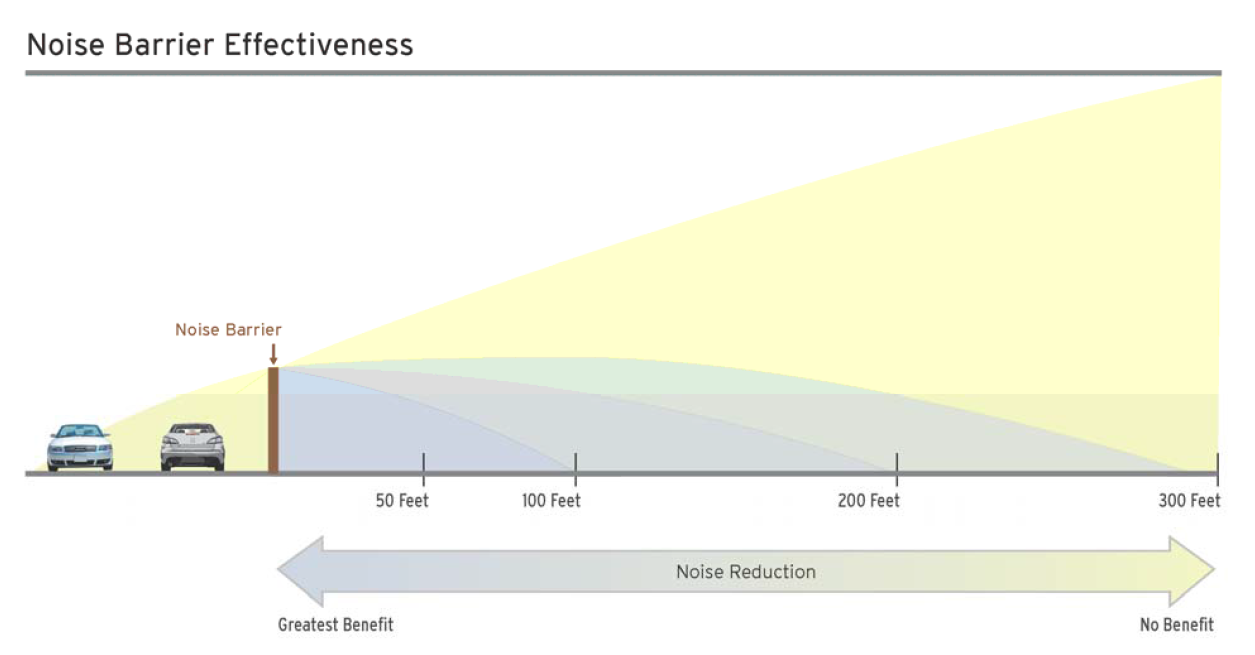FAQ
Did WisDOT consider noise levels as part of the I-94 project?
Yes, it was a federal requirement. U.S. noise regulation (23 CFR 772) requires state highway agencies to determine noise impacts and evaluate possible mitigation measures as part of a proposed Type I Federal Aid project. I-94 is considered a Type I project since it will add traffic lanes.
How did WisDOT determine where to place noise barriers?
The Traffic Noise Model (TNM 2.5)® was used to predict future traffic sound levels. Impacted locations were then considered for noise abatement measures. Project staff evaluated potential design and traffic control modifications, such as prohibiting trucks or changing the horizontal or vertical alignment. Then, noise barriers were modeled for attenuating noise and were optimized to ensure a beneficial and economical barrier was designed. After the evaluation, a determination was made whether each barrier was a feasible and reasonable mitigation measure.
What is an impacted receptor?
An impacted receptor/listener or common use area is one with:
- A predicted future traffic sound level which approaches or exceeds the WisDOT Noise Level Criteria (NLC) for Considering Barriers for different land use categories;
- Or when predicted future traffic sound levels exceed existing levels by fifteen (15) decibels (dB) or more.
NLC is divided into land use categories that include residential areas, serene/quiet lands, parks, schools, hotels, offices, etc.
Are there impacted receptors along I-94?
Yes. Approximately 154 receptors were modeled as part of the noise analysis for the project. Approximately 25 receptors are considered impacted since future noise levels are anticipated to approach or exceed the NLC.
What does feasible and reasonable mean?
For a noise abatement measure to be feasible, a minimum of one impacted receptor or common use area must achieve a five (5) decibel noise reduction. For a noise barrier to be reasonable, the total cost may not exceed $30,000 per benefited receptor. To be considered a benefit, an impacted receptor must receive a minimum of eight (8) dB noise reduction.
How effective are noise barriers?
Effectiveness depends on the distance between the impacted receptor and the barrier. For areas located directly behind a barrier providing an eight (8) dB reduction, the noise level will be perceived as being cut in half. This benefit decreases as a listener moves farther away from the barrier and is negligible at distances greater than 300 feet.
Are noise barriers reasonable for the I-94 corridor from WIS 35 North to US 12?
Noise barriers were evaluated in the areas of the impacted receptors. The noise barriers in most areas were well in excess of the reasonable cost of $30,000 per benefited receptor. In the southwest quadrant of the WIS 35 South Interchange, preliminary costs for noise walls in two locations were found to be less than the $30,000 per benefited receptor. These two noise walls will be voted on by the residents and owners of the benefited receptors to determine if they will remain a viable option for the project. During the final design phase the noise wall costs will be reanalyzed to ensure that the walls remain reasonable.

Will WisDOT consider noise levels during construction?
Yes. The noise generated by construction equipment will vary greatly, depending on equipment type/model/make, duration of operation and specific type of work effort. Typical construction noise levels are shown in the table below.

WisDOT requires that the contractor comply with local noise ordinances governing the hours for operation of construction equipment. Additional investigation and coordination is required by the project team to determine what operations will occur during nighttime hours. Measures to limit noise generating activities, such as pavement breaking, will be implemented where feasible.
